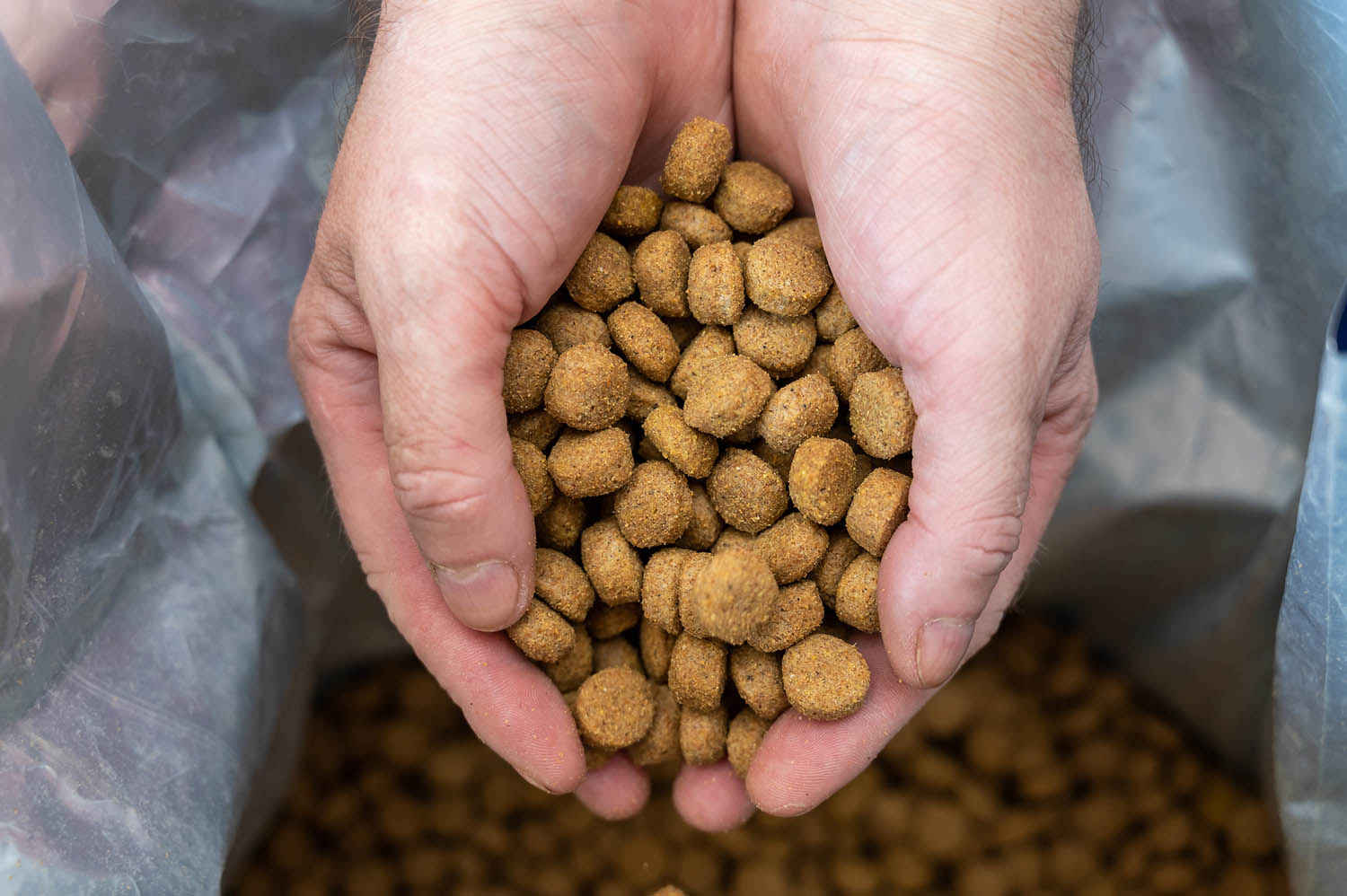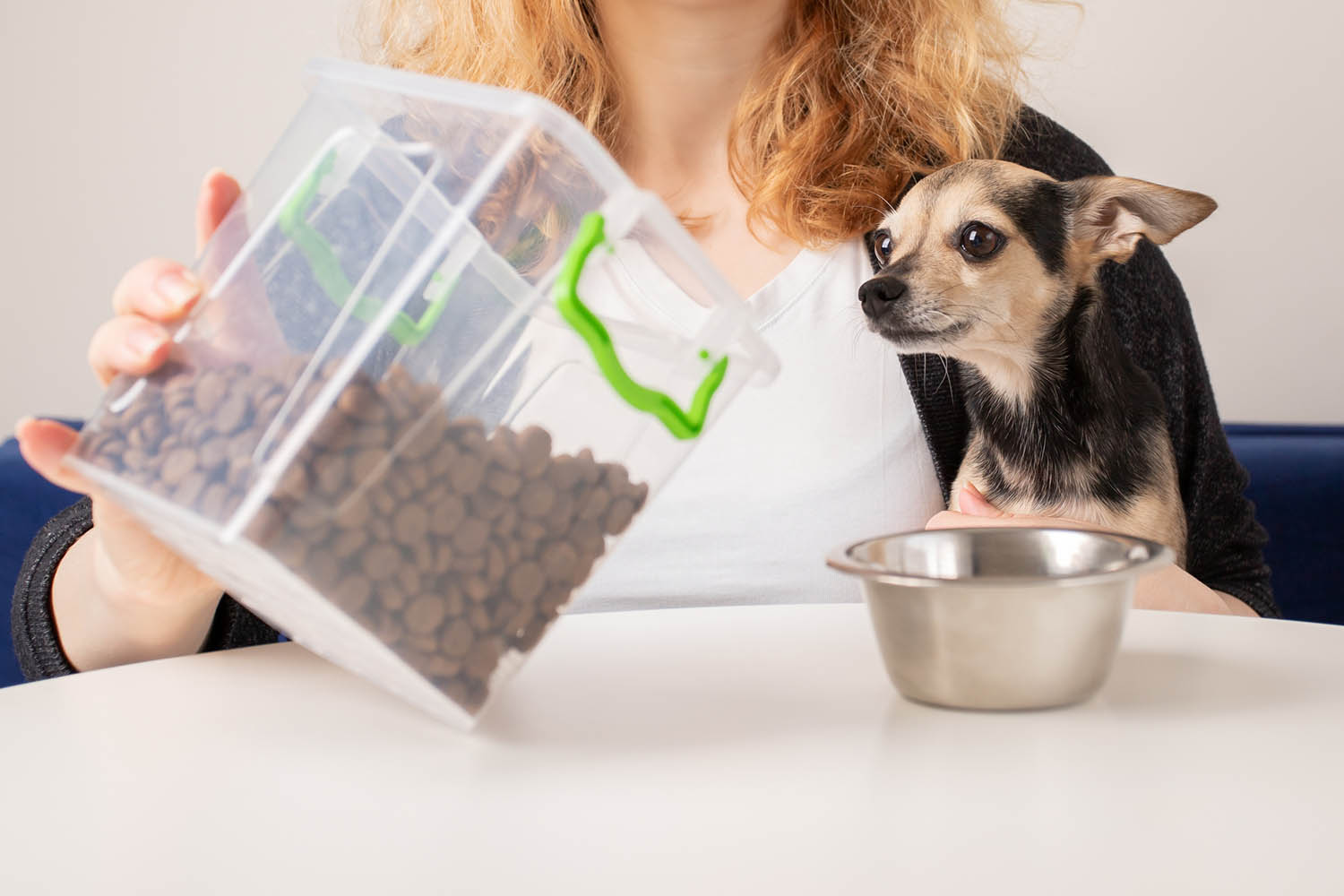Join the Pet Food Institute (PFI) as we continue our look at pet food, from A to Z. Click here to re-visit our earlier post on Carbohydrates.
Pet lovers today have a variety of options when selecting food for their cat or dog, such as wet, fresh, semi-moist or raw-infused. When comparing dry pet food, such as kibble and dry treats, to other types, shoppers may wonder what the differences are between the two. PFI looks at some of the facts about dry pet food:
Dry Pet Food Can Be Either Cooked and Shaped in an Extruder or Baked
Unlike wet pet food, dry and semi-moist food can be cooked and shaped during a process known as extrusion, which is also used for many human foods such as cereal and pasta. The “How Pet Food is Made” webpage explains extrusion in further detail, including how the ingredients are mixed and cooked at high temperatures before being pushed through a die plate that cuts the mixture to the desired shape and size. When making kibble, the food is then moved to a dryer to remove the remaining moisture. In contrast, semi-moist pet food is extruded at a lower temperature and pressure, and ultimately cooled instead of dried, to maintain a higher level of moisture. In addition, some dry pet food and treats are made through a baking process where the dough will be cut into specific shapes and baked in an oven.
For both extruded and baked pet food, the temperatures reach an appropriate level to eliminate potential pathogens or bacteria such as Salmonella. This is known as the “kill step” – a practice in the manufacturing process that eliminates potentially deadly pathogens and is part of a series of safety measures in place throughout manufacturing. Wet pet food’s “kill step” will be after the food is poured into the can and sealed, and then sterilized in a heat and steam chamber. This step is also taken in the manufacture of pre-cooked or canned human foods.
Dry Pet Food is Lower in Moisture, So Read the Guaranteed Analysis with Care
Dry pet food typically has a 10 to 12 percent moisture content. Wet pet food contains 75 to 78 percent moisture. This will be reflected on the Guaranteed Analysis (GA) found on the pet food label, which is required to list, at a minimum, the levels of four nutrients: protein, fat, fiber and moisture contained in the food. The GA on dog and cat food labels are often presented “as-fed.” This means the moisture in the food is included when calculating the other nutrient values. When comparing the nutrient levels between two pet food products, look first at the percentage of moisture. If they are significantly different, such as comparing the moisture levels between a dry and wet food product, you may not be able to make an even comparison between protein, fat and fiber.
To make a meaningful comparison, interested shoppers can compare on a “dry matter basis” (in the absence of water). Click here to learn more about how to make an even comparison between dry and wet food.
Dry Pet Food is Shelf-Stable
Different types of pet food will be handled in different ways to ensure a stable product and reduce the chance of spoilage before the date noted on the package. Canned pet food receives a heat and pressure treatment, fresh pet food should be stored in the refrigerator, and dry and semi-moist pet foods will include preservatives that help prevent spoilage. Two types of preservatives are commonly used: Antimycotics, which stop the growth of harmful bacteria; and Antioxidants, which help prevent fats and oils from becoming rancid. Some products contain natural preservatives such as rosemary extract or tocopherols (a form of vitamin E), although the use of these can result in a shorter product shelf life and higher cost than synthetic preservatives.
The preservatives used in pet food, along with other ingredients such as flavorings or processing aids, are strictly regulated by the U.S. Food & Drug Administration (FDA). For a preservative to be used in pet food, it must be generally recognized as safe (GRAS) for its intended use or must have approval as a food additive. In both the GRAS and food additive process, data is reviewed and assessed by scientific experts to determine that the substance is safe for its intended use.
Dry Pet Food is Among the Many Options for Your Pet
Shoppers have an abundance of options in the marketplace and dry pet food is one of many types of food available for dogs and cats. As mentioned in a previous blog post, while dry pet food is lower is moisture content, it will not dehydrate a dog or cat. Water is an essential nutrient for cats and dogs alike, and proper hydration helps a pet’s body systems function normally and helps them better absorb and digest the nutrients provided in pet food. Pets need sufficient fresh drinking water and pet food manufacturers include hydration guidelines on pet food packages. In addition, whether kibble or another form a pet food, recipes will have carbohydrates. While not considered an essential nutrient, carbohydrates play an important role in supporting our pets’ health by providing readily available energy for your pet and sparing protein to support other bodily functions.
Most commercial pet food recipes are formulated to be “complete and balanced,” meaning they are formulated to provide total nutrition for the life stage of your pet and contain more than 40 essential nutrients. Whether choosing kibble or another type of food for our pets, we can all start by ensuring they receive proper nutrition by looking for a complete and balanced recipe for their life stage before selecting the type of product that works best for your family’s lifestyle.



